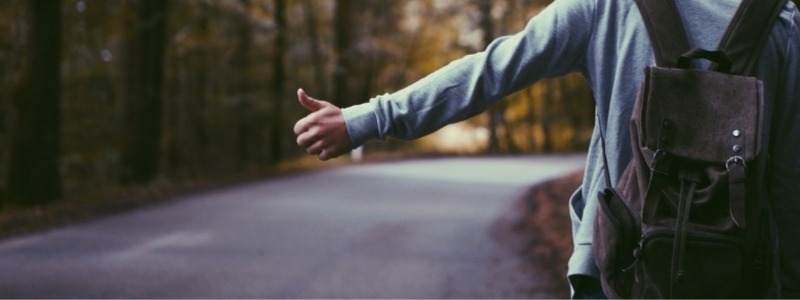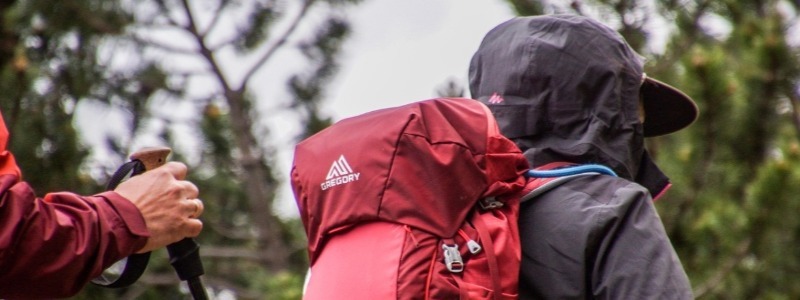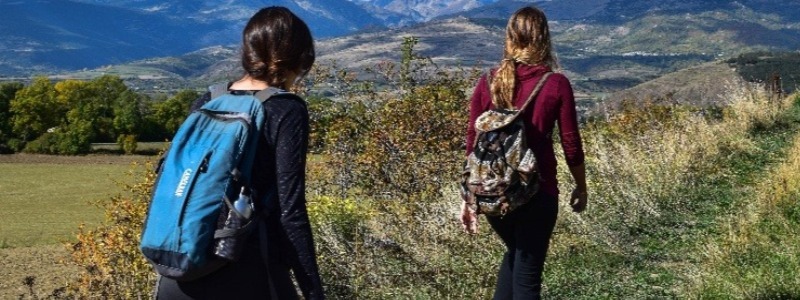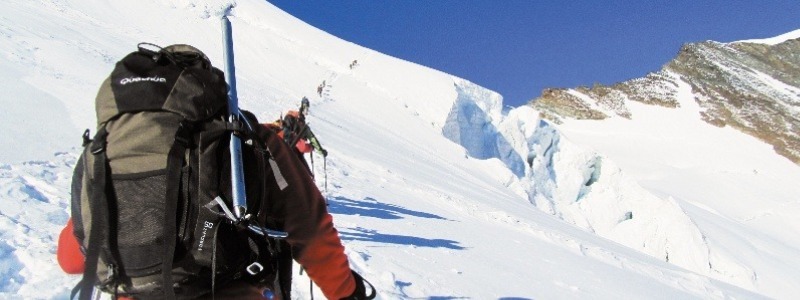If you’re off camping for the weekend, you’re going want something to put your things to that you’ve prepared, however, what’s that thing called. Across this website we’ve talked about rucksacks, daypacks, overnight pack and even hydration backs, however, what are the differences.
BackPack Vs. Rucksack
I generally talk about backpacks, but I have a friend who only talks about rucksack’s, but what’s the difference? In all honesty, the terms are mostly used interchangeably.
If you want to be super-critical, I will use a backpack to describe a smaller bag such as a hydration pack or a daypack, whereas I would use the rucksack term for a larger bag that I was taking camping for example.
Below we’re looking at all the different types of rucksacks and backpacks that are available to you. Remember, while its important to buy specific models for specific sports in most cases, all you really need to start hiking in the countryside is a basic rucksack and a few cheap items of clothing that you can pick up from your local store.
10 Types of Rucksack and Backpacks

Basic BackPack’s
These are generally 10-30 litres in size and come with basic features that will not be hiking specific. At best you’ll get a couple of water-bottle pockets, and maybe an adjustable shoulder strap. It’s unlikely to be anything close to waterproof and will not come with a waist strap, but will be a cheap, durable, backpack that is readily available online and in the shops.
Hydration Backpacks

As the name suggests, hydration packs are designed to carry water, while making it easy to drink on the move. Most hydration pack come with a plastic tube connected to a Bladder/Reservoir that allows you to sip while you’re on the move. Hydration packs come in a range of sizes depending on whether your hiking, mountain biking, cycling, or even running and a variety of storage options depending on how much liquid you want to carry. Anything from 0.5 litres to 3 litres is easily possible.
Day Hiking Backpacks

As the name suggests, day-packs are designed to be taken into the countryside for day hikes. Generally, they’re around the 30-litre size and will come with specialist hiking features such as walking poles loops, pockets and compressor straps to keep the whole backpack together. It’s often possible to combine both a hydration pack and a day pack, allowing you to forgo the need to carry water bottles.
Daypacks of around 30-litres are generally not big enough to carry full camping gear and therefore are limited to the supplies needed for a day trip, however you still should be able to have a full change of clothes, food for day, navigation equipment and a full range of emergency gear just in case you run into problems along your route.
Framed Hiking Backpacks
Framed Hiking rucksack as the name suggests, are large hiking rucksacks that have a frame built in that allows them to stay in shape even when they’re empty. Frames are made of either lightweight aluminium or in the latest, top of the range designs, carbon fibre. The advantage of buying a framed backpack is that they’re better for organisation and thus keeping weight where its suppose to be, and the frame will help with stability to stop it moving around. The problem is that they’re heavier, and therefore will only suit a large backpack where the extra weight will not matter as much.
Frameless Hiking Backpacks
Frameless backpacks are designed without a frame to support the backpack. The general advantage is that they are incredibly light and therefore great for daypacks where a light pack is the first rule to follow.
The fact that they’re frameless can also be a disadvantage when you start to pack a daypack with more than a few kilos. The extra weight can cause stability problems if you don’t focus on getting your gear weight in the right place. They can also be very uncomfortable over a long hike.
Camping Rucksacks

Camping rucksack are those that have been designed specifically for long camping trips where you need to take camping equipment, food, water, clothes and emergency equipment. If you’re away in the countryside for any length of time, you’re likely to need to pack a lot of things in your rucksack and therefore they come in a range of sizes from 50 to 90 litres.
Typically a large 90-litre rucksack will have enough room for everything you need for a long trip, however this does depend on the design. Like the size, camping rucksacks come in a wide range of designs depending what you’re carrying and the length of your torso which directly impacts getting the weight onto your hips.
If you have a short torso, you might find it easier to carry a camping rucksack with a shot length as this will help to get the weight onto your hips, while having tight shoulder straps.
Compression Sack
As the name of the product suggests, you can quickly gather that a compression sack can minimise or compress the stuff inside the bag and make room for more things to be packed. You can use these to reduce the weight of a sleeping bag that you might require when you are travelling.
Snowsports Backpack

Snowsport backpacks are very similar to daypacks above. They generally come in sizes between 20 and 35 litres, have adjustable and padded shoulder straps, and come designed with adjustable hip-belts to help support the weight. The critical difference is that they are designed explicitly with attachment points to carry snowboards, skis and skiing poles allowing you to walk up the mountain, with your snow equipment attached to you.
Laptop Backpack

It has almost become mandatory to carry a laptop to the office every day, and to carry them safely; you can go for a laptop backpack. These laptop backpacks usually have a cushioned back and shoulder straps that help to reduce the pressure of the laptop. There are other pockets for you to store the charger, carry a bottle, money, etc. You may also choose to use these backpacks for travel purposes too.
Sling Bag
A sling bag has been in fashion for quite some time now. These bags look highly trendy and happen to store your quick essentials like sunglasses, wallets, phones, tidbits, etc. They hardly have any weight that can be taken with any dresses that you wear. You can choose to hang them on your side or take them across your body.







